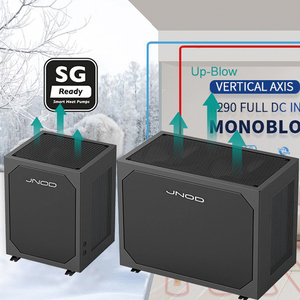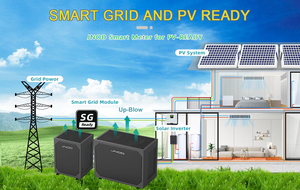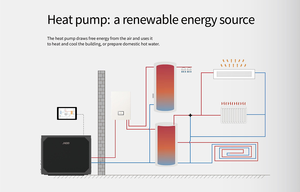
All categories
Featured selections
Trade Assurance
Buyer Central
Help Center
Get the app
Become a supplier

(9621 products available)













 Ready to Ship
Ready to Ship













 Ready to Ship
Ready to Ship
The industrial machinery sector extends across numerous categories which serve different industry needs. The refrigeration and heat exchange equipment category stands essential because it controls temperatures across multiple uses. The category contains essential air conditioning unit central, which serve dual roles in industrial facilities and domestic environments. These temperature regulation systems maintain interior temperatures and protect stored products by providing comfort. The market demand for air conditioning unit central has surged because technology improvements meet the rising requirement for power-saving solutions.
Each type of air conditioning unit central exists for distinct applications in the current market. The market offers central ductless mini-split windows and portable air conditioners as primary types. A central air conditioner operates in large buildings, requiring ductwork to distribute cooled air. The system maintains high efficiency while delivering steady temperatures across the entire area. The ductless mini-split system functions best for homes without ductwork or independently heating/cooling specific rooms. The system features an outdoor compressor combined with one or more indoor air-handling units, which allows users to choose from flexible installation options. The single-room cooling function of window air conditioning unit central makes them accessible for installation and budget-friendly. The portable air conditioning unit is a movable solution for short-term cooling requirements in spaces where window units are impossible.
The primary function of air conditioning unit central involves cooling enclosed spaces, but they provide supplemental features for enhanced functionality. The latest air conditioners have programmable thermostats that help customers establish temperature profiles with corresponding time slots for maximum energy conservation. Built-in filtration systems in air conditioning units improve indoor air quality by detecting and removing airborne dust particles, pollen, and other allergens. Some sophisticated designs have smart connections, allowing remote control using smartphones or integration with smart home systems. The contemporary air conditioning unit central Its high SEER (Seasonal Energy Efficiency Ratio) ratings, which indicate higher energy performance, help modern air conditioning unit central to give energy efficiency priority. Another key aspect is noise reduction technology, which guarantees the air conditioner's operation doesn't compromise environmental comfort.
The building process of air conditioning unit central combines different materials along with specific components that function together to reach effective cooling results. The main parts are a compressor, condenser coil, evaporator coil, and expansion valve. Usually made of high-grade steel or aluminum to withstand severe pressure and temperature conditions, the compressor is the fundamental part of the air conditioner. Because they offer great thermal conductivity, copper or aluminum makes the condenser and evaporator coils, enabling effective heat transfer. Durable plastics and metals build the casing and inside components to offer a lifetime while resisting environmental effects. The material selection in air conditioning unit central affects both their operational performance and their energy consumption, together with their product longevity.
Maximum benefit use results from the efficacy and routine upkeep of air conditioning unit central. Users of an air conditioner must select both the appropriate size and model of the unit to avoid undercooling or overcooling the area. An air conditioner's correct installation requires adequate insulating coverage surrounding the unit to prevent air leaks. Regular maintenance guarantees high efficiency and long system life using filter cleaning and replacement, refrigerant leak detection, and coil inspections. Modern air conditioning systems' programmable features let consumers save energy when used with thermostat settings to comfortable levels. Complete sealing and insulation are required for the region to prevent heat ingress, which lets air conditioning unit central operate at maximum capacity.
Choosing air conditioning unit central calls the consideration of several elements. The first step is to identify the area to cool since this will set the needed cooling capacity, often stated in BTUs. However, one with too much capacity will make the unit cycle inefficient, and a unit with insufficient capacity may not chill the area sufficiently. The SEER rating reveals the unit's energy efficiency. Higher ratings show reduced running costs and better energy efficiency. Smart networking technology and programmable thermostats can improve the user experience and reduce energy use. Some versions call for professional handling, while others are meant for self-installation; hence, the installation process is the final factor to consider.
Choosing air conditioning unit central requires environmental impact consideration. One must consider how it would affect the surroundings. Choosing environmentally friendly refrigerants in designs helps lower greenhouse gas release into the atmosphere. Apart from reducing electricity costs, energy-efficient devices also cut carbon dioxide output. Also, search for products with energy-saving modes or timers that help reduce power consumption. Some producersprovidee programsforr recycling previous units, which environmentally aware consumers will appreciate. These factors enable the identification of environmentally friendly air conditioning options.
The installation of air conditioning unit central differs greatly depending on the model selected. Window and portable units are relatively straightforward, whereas central systems require professional installation because of the intricate ductwork. Achieving optimal performance and energy efficiency depends on properly installing any kind of device. Regular filter cleaning and refrigerant level checks are necessary to extend the life of the device. Scheduled checks help prevent possible problems, maximizing the system's performance and lowering energy costs while enhancing comfort.
Central air conditioning unit central delivers cooled air throughout the building through its ductwork system, making it most suitable for large buildings. Ductless mini-split systems use an outdoor compressor and indoor units to provide zone-specific cooling without ducts. This arrangement allows for easier installation and is best suited for areas with no existing duct system.
Programmable thermostats to set specific temperatures and time schedules help to improve the energy efficiency of air conditioning unit central in many other ways as well. Proper insulation and cleaning or filter changes are maintenance practices that can help boost efficiency. Turning on the energy-saving settings and sealing any gaps surrounding the unit are other ways to lower power use.
Yes, there are environmentally friendly choices for air conditioning unit central. Some devices use R-32 or R-410A, which have less environmental effect. The models with high SEER ratings reduce the carbon footprint by reducing power use. Some manufacturers also offer recycling programs for obsolete systems, helping lessen the environmental effect.
Maintaining a portable air conditioning unit central calls for filter cleaning or replacement, condensate container draining, and refrigerant leak checks. Regular checks on the air intake and exhaust vents will help to ensure they are not blocked off. Maintaining the unit running at its best and prolonging the product's life depends on these actions.
Yes, air conditioning unit central can be fixed. The most frequent issues are clogged filters, a broken compressor, or refrigerant leaks. A competent technician will be able to determine the reasons of the failure and repair the device to bring back its cooling capability. Regular check-ups will help prevent such issues and ensure the system works correctly.